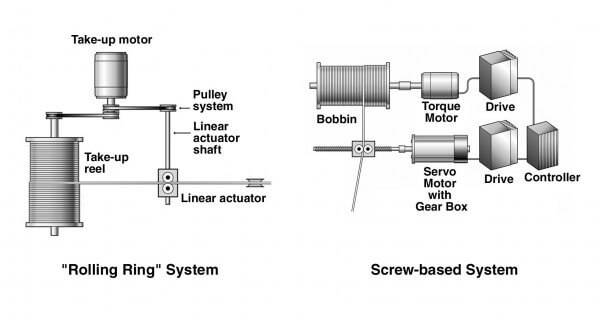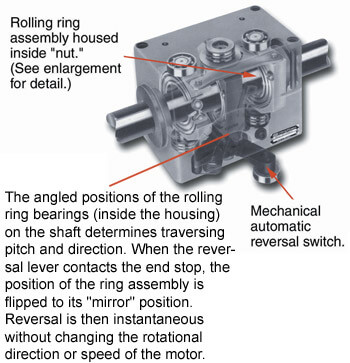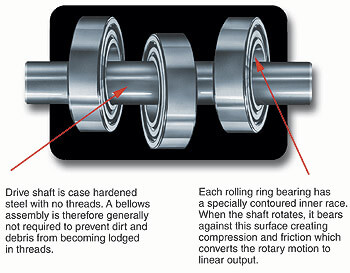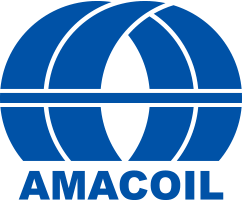Understanding Rolling Ring Linear Drives
The technology has many advantages over conventional devices, but is not for every application
By Mark Wilson
Rolling ring linear drives are used worldwide, to meet a variety of positioning and reciprocating linear motion applications. These linear drives convert the rotary motion of a smooth, threadless shaft into linear output at fixed or variable pitch.
Typically, rolling ring linear drives reduce a linear motion system’s dependency on electronic controls, clutches, cams, gears and so forth (see Figure 1). This, in turn, reduces overall operating and maintenance costs, and permits uninterrupted production for longer periods of time before the system needs to be stopped for adjustment.

But these benefits are not enjoyed for every linear motion application. To determine if an application will benefit from using a rolling ring linear drives, the first step is to understand the device’s basic features and have a good handle on the specific application requirements.
The basics of rolling ring technology are briefly covered in what follows. Discussion with an applications engineer knowledgeable about rolling ring drives will help insure that users receive all the benefits rolling ring engineering has to offer. As they review the following information, they should compare rolling ring setup requirements to those of the linear motion system currently in use. They may find a rolling ring linear actuator to be a more efficient and more profitable alternative.

A rolling ring linear drives operates on an unusual but simple procedure. It runs on a smooth case-hardened steel drive shaft. The threadless shaft passes through a series of rolling ring bearings situated in a load-bearing housing, or nut. Rolling ring bearings should not be confused with standard ball or roller bearings. In a rolling ring bearing, each ring has a specially contoured inner race that bears against the smooth shaft. The rings are set at specific angles relative to the shaft (see Figures 2a and 2b).
For many applications, even those requiring automatic reversal, rolling ring systems need only a single-speed unidirectional motor to drive them. Users select the rotational direction of the motor. The contoured inner surface of each ring bears against the shaft when it turns, causing the rings, and the attached housing/nut, to move linearly. Loads borne by the nut are then moved in a linear direction.
East-to-adjust pitch

The pitch, or distance the nut moves per a single shaft revolution, is adjustable by changing the angle of the rings relative to the shaft. This is accompanied by a pitch control — usually a lever or a dial — on the housing.
Rolling ring linear drive manufacturers can design a linear motion system to permit pitch adjustment without slowing down the motor, and without making any other adjustments to controls. This is a production-boosting advantage should pitch adjustment become necessary during a production process. The system continues to operate while the operator tweaks the pitch to meet requirements. This feature helps rolling ring linear actuator users to maintain peak, or near-peak, production rates.
Easy pitch adjustment also permits using pitch control to govern linear speed. Instead of using a more costly variable-speed motor, users can employ an economical single-speed motor. Changing the pitch setting of a rolling ring drive changes the linear distance the nut travels per shaft revolution. The end result is that the nut traverses faster or slower while being driven by a single speed motor.
Typically the smooth, unthreaded shaft will not trap dirt and debris. This generally eliminates the need to incorporate a protective bellows assembly. Furthermore, it virtually does away with the “jamming and churning” that result from particles getting caught in the threads of a screw-based system. Such churning can damage expensive equipment and result in downtime for cleaning and repairs.
Maintenance is simple
Besides periodic shaft lubrication, there are no routine maintenance procedures required with rolling ring systems. Over time, the wear on the drive shaft will make it necessary to replace it. And just like threads on a screw, the rolling rings can wear over long periods of continued use. Generally speaking, however, rolling ring linear actuators pay for themselves in time savings and lower maintenance costs well before significant maintenance or replacement is required. Rolling ring linear actuator manufacturers, such as Amacoil, report some customers using their rolling ring systems for periods of ten to fifteen years without replacing the actuator or other major components.
Spooling, slitting, spraying, feeding — these types of applications (see Figure 3) are likely candidates for rolling ring linear actuators. Such actuators enable instantaneous automatic reversal of the traversing direction without the use of complex controls and without clutches, cams, or gears. Furthermore, the motor need not be slowed down or stopped to change traversing direction.
A mechanical lever affixed to the rolling ring drive’s nut is automatically “flipped” when the nut contacts its end stop, which may be adjusted to determine the length of the traverse before reversal. When the lever is flipped, it causes instantaneous reversal of the direction of traverse. Because no electronic controls or gear systems are involved, design time is less, maintenance is reduced, and operation requires no special training or skills.
The maintenance issue is one that merits consideration. The workhorse nature of these drives permits longer periods of continuous use of production machinery, which in turn helps make processes more productive and more profitable.
If you’re trying to move a very heavy load, say, one with a requirement of more than 800 lbs. axial thrust, rolling ring actuators operating on smooth drive shafts may not be the ideal solution. A screw jack, hydraulic system, pneumatic setup, or some other method may provide the powerful axial thrust to meet such application requirements.
However, systems that just push against a load with unrelenting can cause problems if overload occurs. With a rolling ring drive, the load is supported directly by the nut. As a result, side-thrust capacity can be tapped out with extremely heavy loads. But instead of continuing to push the load, slippage will occur. Slippage refers to the load-bearing nut being weighed down so heavily that it over compresses itself on the drive shaft and, as the shaft rotates, it simply slips through the ring bearings without causing linear motion — thereby providing overload protection.
Supporting the load
Screw-based and other types of non-rolling ring systems normally do not require the nut to bear the payload. Instead the load is attached to a carrier of some sort that incorporates its own supports and guide rails. This transfers moments of force from the nut to the load carrier and protects the system. The additional cost of fabricating the load-carrying device must be figured into the system development costs.
A rolling ring system typically has the load supported directly on the traversing nut. This means the user must pay heed to the risk of torque, or twisting the shaft, if the load is overhung or off center. In such applications, to remove moments of force from the nut, rolling ring linear actuators require an attachment called a linear slide to counter radial forces. The linear slide is a sturdy support system that is designed to carry the load. The slide is linked to the rolling ring actuator via a flexible coupling. Torque and bend forces are transferred to the slide, away from the actuator, thereby protecting the actuator and drive shaft.
Accuracy with rolling ring drives is typically to within ±0.005 in., at speeds of up to 13 feet per second over distances of up to 16 feet. Some rolling ring linear actuator system offer increased accuracy to within ±0.0004 in. If you’re trying to achieve incremental linear movement in the <0.0004-in. range, a rolling ring actuator may not meet your requirements. Medical and laboratory equipment often carries a requirement for very high accuracy. Even though thread wear eventually becomes an issue, ball screws or precision-ground lead screws enable fine, repeatable incremental linear movement.
Rolling ring drives do score accuracy points for their backlash-free performance. If your application is in any way sensitive to backlash at the reversal points, a rolling ring actuator will provide exceptionally smooth, steady reversal of the traversing nut and accompanying load.
The bottom line is that for most linear motion applications, rolling ring linear actuators are worth a look. They may make some of your linear motion applications less costly and more efficient.
If you think you have a use for one of these devices, you should call an applications engineer at a rolling ring actuator manufacturer or distributor. They are familiar with rolling ring technology and are experts at explaining how and if rolling ring drives will meet your needs. Additionally, a good rolling ring linear actuator provider can, in most cases, also supply necessary products that enhance the benefits derived from the technology.
If you consider using a rolling ring linear drive, make certain you are working with a company having proven experience with this technology. Conversion from ball bearings to rolling ring bearings is a precision procedure. Only experienced rolling ring manufacturers have the machining expertise required for the process. Additionally, the rolling ring provider you select should supply engineering and technical support, be able to fill orders from inventory, and provide parts and repair services.
Your best bet is to contact your distributor, or search the Internet and trade journals for manufacturers’ ads, and contact the companies directly. After a few questions, you will know whether you are connected with knowledgeable rolling ring linear motion experts.
